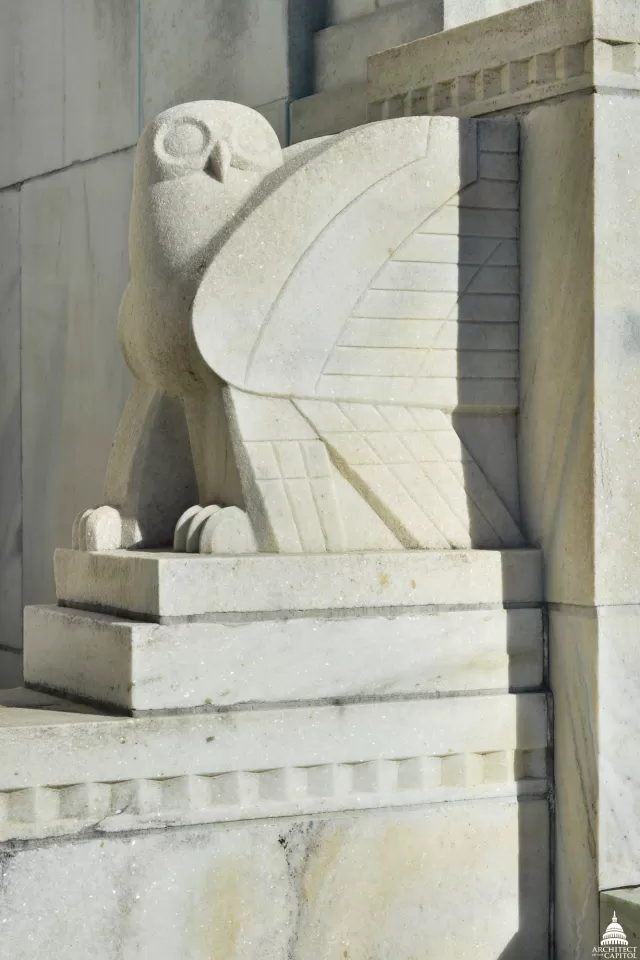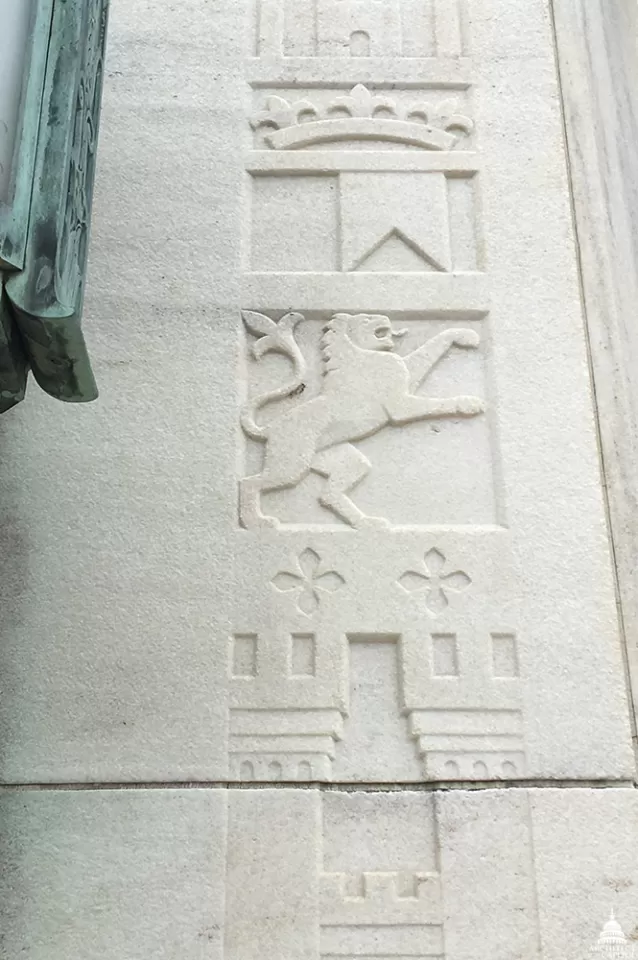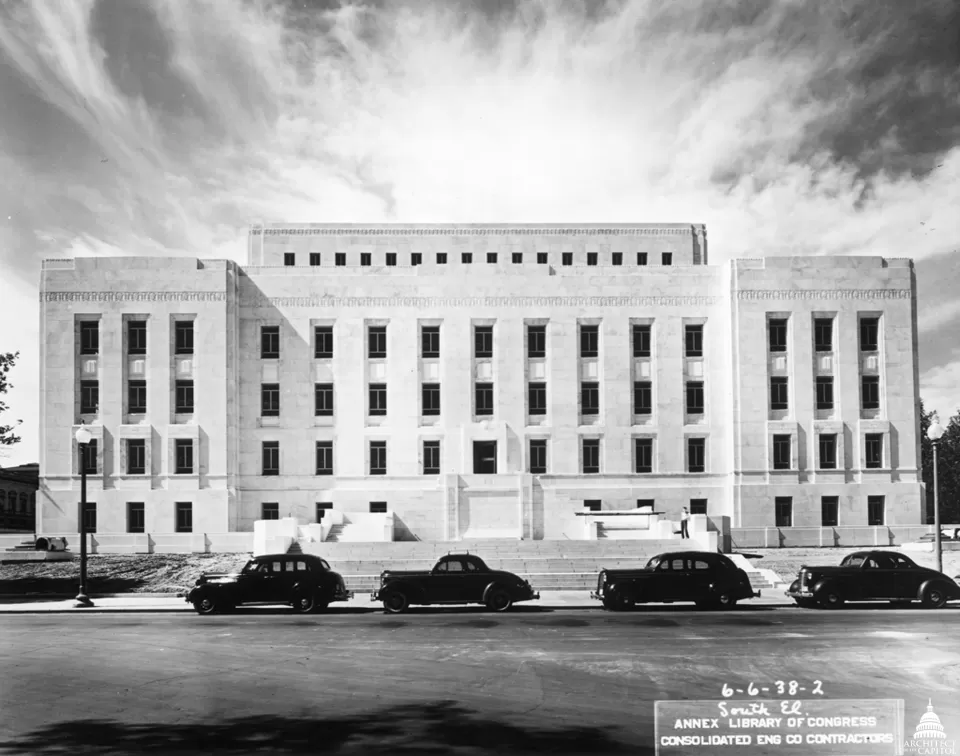Image Gallery




Library of Congress
The John Adams Building is a well detailed but restrained Art Deco design, an architectural and decorative style inspired by the Exposition des Arts Decoratifs held in Paris in 1925. The building rises five stories above ground, with the fifth story set back 35 feet. It contains 180 miles of shelving (compared to 104 miles in the Jefferson Building) and can hold ten million volumes. There are 12 tiers of stacks, extending from the cellar to the fourth floor. Each tier provides about 13 acres of shelf space. Surrounding the central bookstack core are three floors of offices with access to natural light and air.
The exterior is faced with white Georgia marble, which is enlivened with a limited amount of carved decoration. The bronze and glass doors of the John Adams Building feature the history of the written word depicted in twelve figures (six on the east doors and six on the west doors).
Thoroughly modern in every respect, the building's interior showcased such new materials as acoustical block, Formica, vitrolit and glass tubing. Decorative features and metalwork in the building's public spaces are superb examples of Art Deco's streamline classicism and decorative cubism.
When it opened in 1939, the Library's shelving capacity tripled to 15 million volumes. A silent pneumatic system whisked books in leather pouches from the annex to the main reading room across the street in a breathtaking 28 seconds.
In 1928 the Librarian of Congress, Herbert Putnam, urged Congress to authorize construction of an annex to relieve the potential space shortage that was sure to affect the 31-year-old main building. Despite stack space that was added in 1910 and 1927, the prospect of running out of room in the near future was real.
On June 13, 1930, $6,500,000 was appropriated to build the annex Putnam had requested. The funds were also used to build a tunnel to connect it to the main building and to make an addition to the east front of the old building (now known as the Thomas Jefferson Building) for a rare book room. An additional appropriation in 1935 brought the total authorization to $8,226,457.

Architect of the Capitol David Lynn commissioned the Washington architectural firm of Pierson & Wilson to design the building, with Alexander Buel Trowbridge as consulting architect. The contract stipulated completion by June 24, 1938, but the building was not ready for occupancy until December 2. The move of the Card Division started on December 12, and it opened its doors to the public in the new building on January 3, 1939. In 1976 the annex was named for Thomas Jefferson, but was changed in 1980 to honor John Adams.




Library of Congress